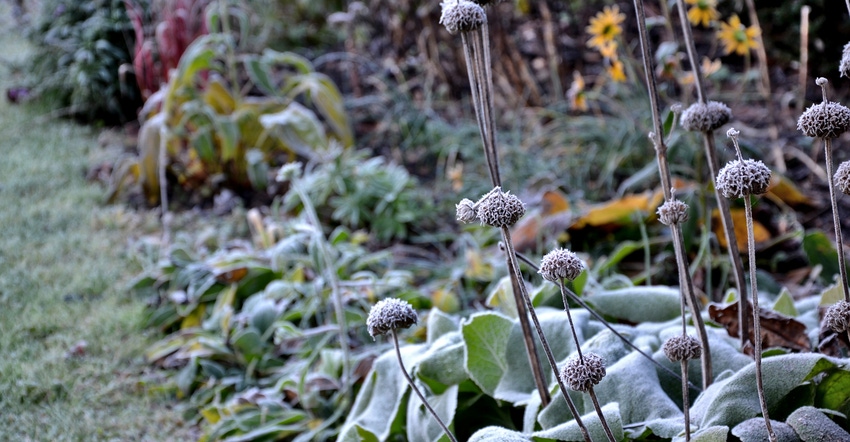December 17, 2021

It’s often the simple things in life that are realistically within reach and make a meaningful difference: A modest reduction in sweets to cut calories. Slowing down on the highway to save gas. Buying coffee out one less time to save some hard-earned income. Minor changes in habits like these examples can result in big returns in the long run.
It's also true in the garden, where small tweaks in maintenance practices can result in significant gains for the diversity of visitors that fly, crawl, burrow and walk into our yards. Here are five practices that I’ve learned over the years:
1. Use natural mulch. No need to buy mulch. In winter, keep fallen leaves on the ground in garden beds where possible. This will reduce mulch use, and help protect butterflies and moths, because great spangled fritillary, wooly bear and many other caterpillars survive the freezing winter under a bed of leaves. It’s also where clearwing and luna moth cocoons lie on the ground, protected by leaf litter. Reducing mulch use is good for certain bee species that need bare, exposed soil to nest in. Native plants installed 16-18 inches apart quickly grow together, reducing or eliminating the need for brown mulch, a technique known as green mulching.
2. Don’t kill the weeds. Oddly enough, weeds in our lawns are good for the bees. Cut grass higher and less frequently to give weeds a chance to flower between mows. Dandelions, clover and violets provide excellent nectar for foraging bees. If we continue using tall fescue lawns, they are the best plants we have to walk on, then we should do so in a way that is as environmentally friendly as possible — no more weed-and-feed.
3. Keep fallen trees. A few large fallen branches or trees are great places for morning cloak, question mark and comma butterflies to overwinter as adults. They also take refuge from the cold in the scaly bark of shagbark hickory and white oak trees, and make appearances on warm, sunny winter days. Fallen, dead and rotting branches or trees also provide food and habitat for beetles.

Wildlife, both large and small, find safety in fallen trees during the winter. Adult butterflies often overwinter in this type of native habitat.
4. Don’t trim grasses. During winter, keep perennial and grass stems standing so birds and mice (yes mice, because they make happy hawks!) can eat seeds that become scarce when snow covers the ground. Cut only perennial stems that tip over early and look messy. Also, prune small trees, shrubs and vines in winter. Some bee species prefer burrowing in the soft pith of woody plants such as elderberry, sumac, wild hydrangea and beautyberry. In March, when it is time to cut back perennials, cut them high, with 8-24 inches of stubble poking out of the ground. By April, new growth will hide the stubble. Bees will drill into the pith of the cut stems in spring and summer to lay eggs.
5. Skip cleaning the pond. If you are lucky enough to have a small water garden or rubber-lined pond, then you likely have dragonfly larvae and many other amphibian and insect species living in the bottom. Don’t scoop or clean out the mucky bottom until July; this gives the insects an opportunity to crawl out and transform into adults naturally in spring. We clean out our water features every other year, taking the muck (in buckets) to a nearby wetland just in case there are a few pollywogs or cadis flies still hanging out at the bottom.
Incorporating these simple maintenance practices into your routine can be rewarding to gardeners and the wildlife that will call your native landscape home. They will be singing your praises!
Woodbury is a horticulturalist and curator of the Whitmire Wildflower Garden at Shaw Nature Reserve in Gray Summit, Mo., where he is an adviser to the Missouri Prairie Foundation’s Grow Native! program.
About the Author(s)
You May Also Like




